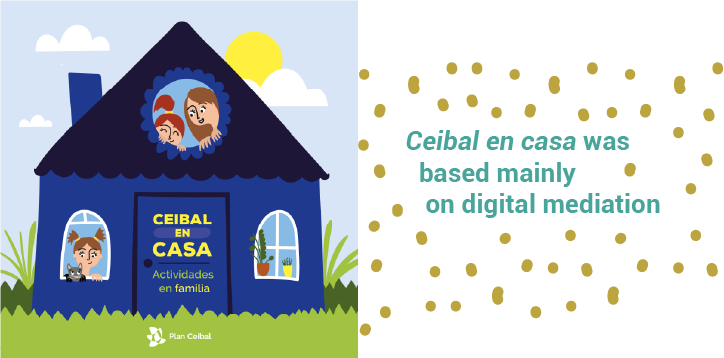Plan Ceibal and the National Public Education Administration (Administración Nacional de Educación Pública, ANEP) in Uruguay worked together to transform an in-person learning-based programme into a distance learning solution to guarantee continuity in education.

Ceibal en casa was based mainly on digital mediation and was implemented immediately after the announcement of the school closures, thanks to the fact that it could use the range of pre-existing digital resources in the Plan Ceibal. Created in 2007, this plan provides a personal computer and internet access at education centres to all students and teachers in public education, both at primary level and basic cycle secondary level, while also offering a broad range of educational resources and teaching services and programmes.
The plan offered a solid provision of digital platforms and services, as well as support and orientation for teachers, students and students’ families to guarantee distance learning in public primary and secondary schools, with coverage close to 88% of students and 90% of teachers in the public education system in Uruguay. [1]
The plan had the support of the Learning Management System, CREA, as a main input for transferring online a large number of the activities that had been done in person. CREA already had communication tools, digital learning platforms and over 173,000 educational resources such as adaptive solutions and gamification solutions, to which were added new functions such as videoconferencing. This was possible thanks to the high level of penetration of internet in homes, 88% in general and 93% in homes with children aged 14 or less, and because access to computers is over 76%, thanks to a great extent to the devices provided by Plan Ceibal. [2]

To carry out this initiative, Ceibal worked on a process of transformation and adapting to the new scenario, switching from being a programme intended to complement and improve in-person classes to become a wholly digital distance learning solution. This process addressed technical and educational aspects, from facilitating access to educational resources without data consumption costs to training teachers and orienting parents.
Furthermore, specific audiovisual content was developed, in emerging formats, with multiplatform distribution both on social networks and television channels, in order to reach those students with no internet connection at home.
The integral design of the activity, aimed at teachers, students and their families, was carried out in a context of major implementation challenges, which it was possible to address to a great extent thanks to the versatility of the management and working teams in the Plan Ceibal and the ANEP, and the collaboration of the whole education community in Uruguay.
The experience gained attention in the press, with an impact both in international organizations’ specialist publications and global media.
1. Internal Report Plan Ceibal: “Narrativa Ceibal en Casa” (“Ceibal At Home Narrative”), review period from 03/16/2020 to 06/30/2020.
2. This information comes from the collation of various sources including: EUTIC 2019; Agesic, 2020; and the Department of Monitoring and Evaluation of Plan Ceibal based on ECH-INE 2018.
